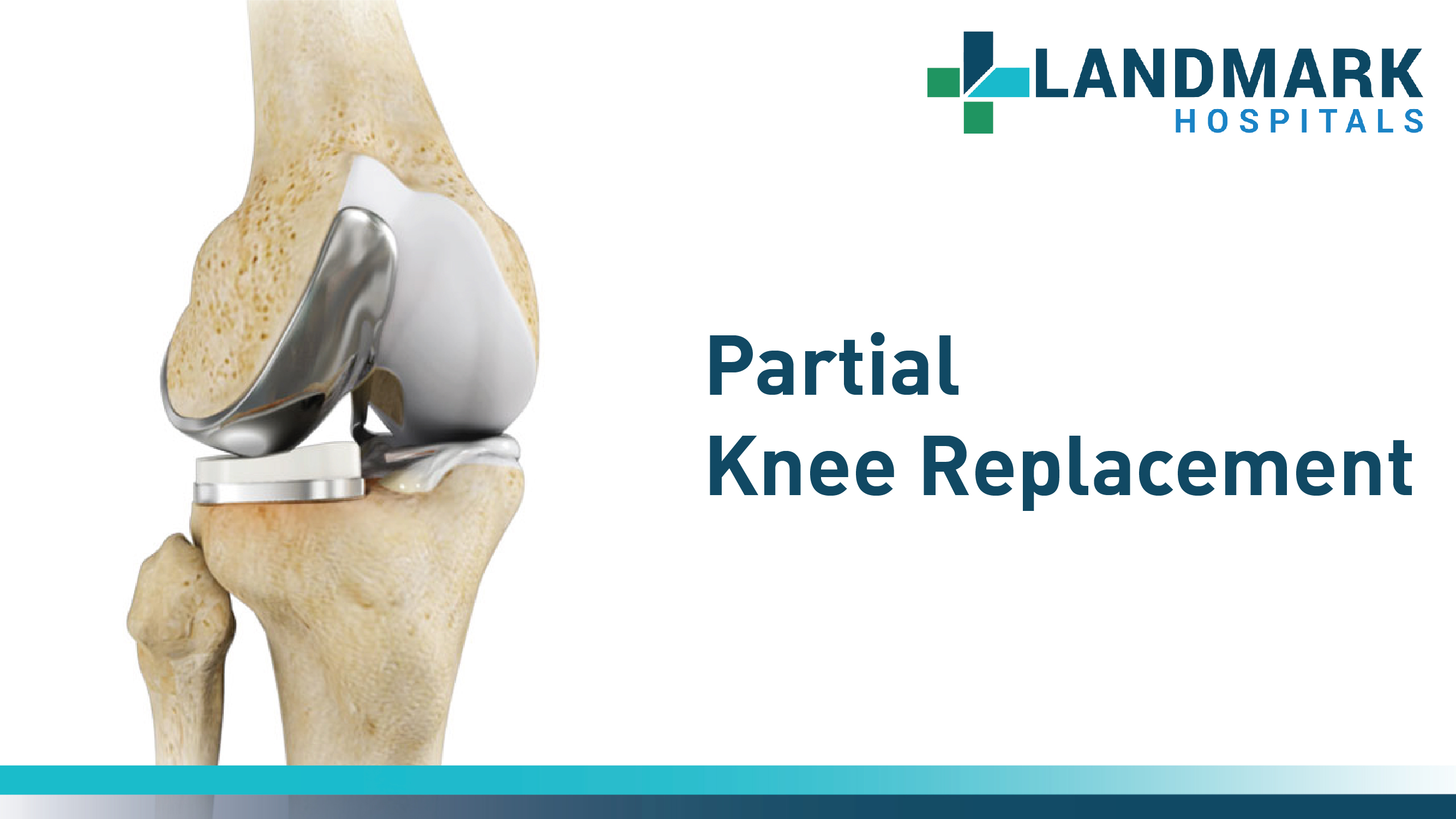
Knee is the largest joint which helps in all the movements of the body. It is made of 4 things namely, tendons, ligaments, bones, and cartilage. Knee is also a complex joint. Due to this, it is exposed to many types of injuries like fractures, ligament tears, sprains, dislocations etc. Some of these injuries can be treated using medication and doing exercises. However, some injuries compulsory need surgery to rectify them.
Osteoarthritis is the main cause for knee surgery. This is the most common condition for the 30% of the population. Osteoarthritis is caused because of wear and tear of the cartilage in knee joint. This is the condition in which, gradually the cartilage in the knee joint wears off. Osteoarthritis attacks any part of the body like hip, fingers, and knee. But most commonly it attacks Knee Joints.
Osteoarthritis causes partially or totally. If one part of the knee joint affected with osteoarthritis, then that part needs to be replaced. This is called Partial Knee Replacement. If complete knee joint gets damaged then, the complete joint must be resurfaced and placed with artificial implants. This process is called Total Knee Replacement. Let us discuss brief about Partial Knee Replacement in this article.
Partial Knee Replacement :
Partial knee replacement removes the damaged cartilage from the knee and replaces it with prosthetic implant. Unlike Total Knee Replacement removes all the cartilage. A Partial Knee Replacement typically removes and replaces cartilage from one particular region .
This procedure is also known as Uni-compartmental Knee Replacement or Uni or Partial Knee Resurfacing. A variation called bi-compartmental knee replacement can also be done to repair two regions but is less common.Three bones comprise the knee joint. The Patella (Knee Cap), Femur (Thigh Bone), and the Tibia (Shine Bone). The Patella is a rounded triangle shape embedded within the Quadriceps tendon and the Patellar tendon below. The two large knob like parts at the base of the Femur called the Femoral Condyles form the top of the knee. The back surface of the Patella, weight bearing portions of the Femoral Condyles and the top of the Tibia are lying with the Articular Cartilage which minimizes the friction and helps prevent damage to the bones during the movement.
The knee side to side motion is stabilized by the Collateral Ligaments and the Cruciate Ligaments prevents excessive back and forth motions while allowing knee to flex and extend. The knee can be divided into three compartments, the medial compartment is between femoral condyle on the inside of the knee and the tibial plateau. The lateral compartment exists between the outer condyle and the tibial plateau. And the patellofemoral compartment is the region between the the patella and the femoral condyles.
A partial knee replacement can be done in any of these compartments. But is most common in the Medial Compartment where degenerative arthritis tends to occur more frequently.Partial Knee Replacements are reported to be natural than the total knee replacements. But ideal candidates must fits the selection criteria. For optimal results, uni-compartmental candidates should have significant orthopedic damage confined to one knee compartment. If arthritis is widespread, a total knee replacement is recommended.
Partial Knee Replacement are restricted to the patients who are not obese and who have healthy knee ligaments. Particularly an intact ACL. Also the cartilage damage should not be the result of the anatomic knee alignment problems. That may be better treated with different procedures. Other criteria used to determine whether the partial knee replacement procedure is appropriate include age, range of knee motion, bone structure and the amount of exercise a person gets.These selection criteria help reduce the number of patients needing revision surgery or a total knee replacement at a later date.
A partial knee replacement generally takes 1 to 2 hours to complete. Surgical details may vary by procedure and component design. Generally a 3” – 5” inches incision is made above the damaged compartment at the front of your knee. Muscle and fatty tissue are carefully moved to side. Patella is shifted to one side to provide the access to femur, tibia in the affected compartment. The degenerated cartilage is removed and some underlying bone is usually cut and sculpt it to another implants to be cemented in the place. Some procedures involve computer assisted 3D emerging and micro robotic instruments to aid and remove the damaged parts and cutting bones. While other procedures use manual instruments with procedure guides. If patella needs resurfacing, a series of similar steps are used to remove the damaged cartilage and prepared for the implant.
Once implants are prepared and tested, Prosthesis are positioned and cemented and in place. Any of the excess cement is removed. For lateral or medial compartment resurfacing, the bearing surface is usually a fixed to the tibial plate by press locking or imparted into the place to complete the repair.
After proper motion and function are confirmed, the various layers of the tissue that it been separated or joined with dis-solvable stitches and the skin incision is seal with surgical staples. A bandage will be wrapped around your knee and you will be taken to the recovery.
Compared to total knee replacement, partial knee replacement has many uses. First and main thing is, patient will get relief from knee pain. There will be less blood loss. Patient will recover fast from the surgery. There will be fewer complications involved in partial knee replacement. In partial knee replacement, damaged bone and tissue are removed which make your knee joint to function like before. The smaller incision used for Partial knee replacement makes for a quicker recovery when compared to total knee replacement.
Dr. Sudhir Kumar Reddy holds eminent qualifications, having obtained credentials as MS (Orthopaedics) from AIIMS, and M.Ch.Ortho from University of Dundee, U.K.